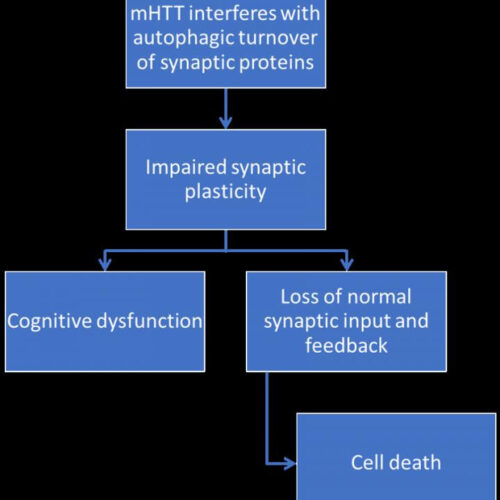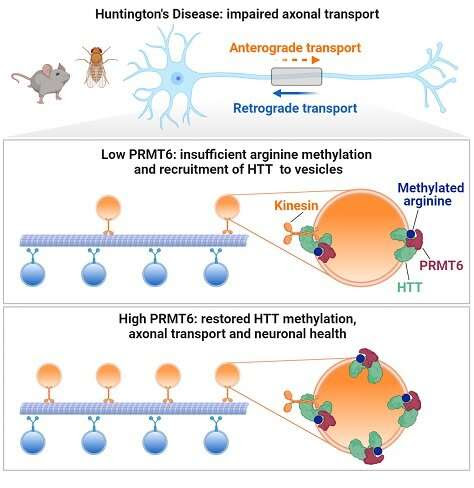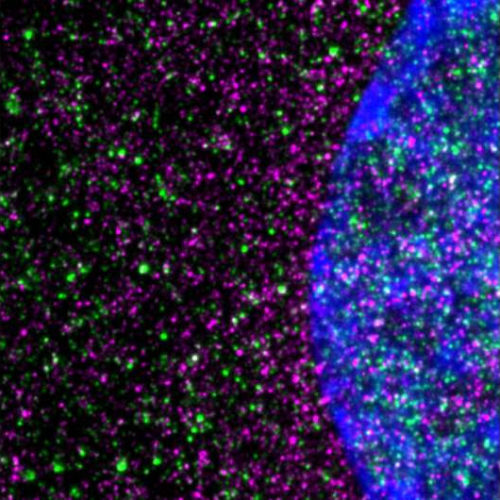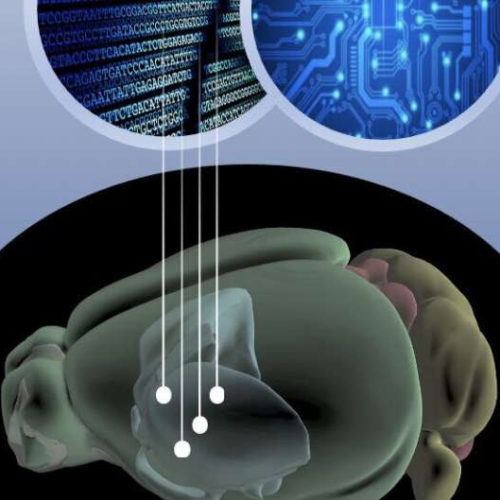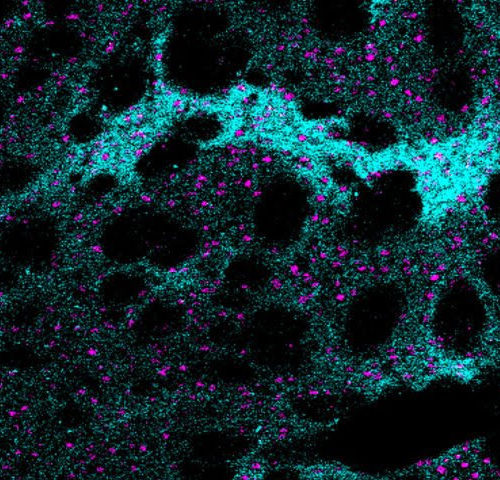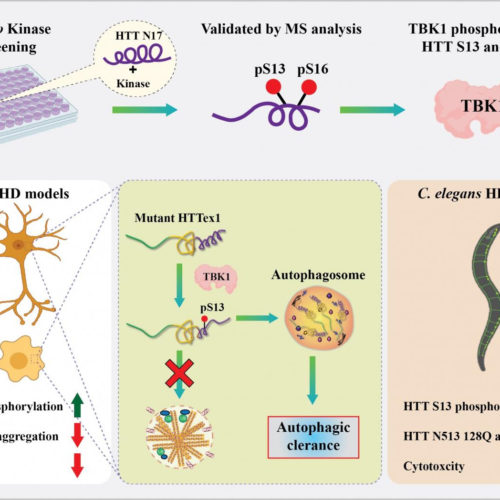by Lund University A montage of three images of single striatal neurons transfected with a disease-associated version of huntingtin, the protein that causes Huntington’s disease. Nuclei of untransfected neurons are seen in the background (blue). The neuron in the center (yellow) contains an abnormal intracellular accumulation of huntingtin called an inclusion body (orange). Credit: Wikipedia/ Creative...
Tag: <span>Huntington’s Disease</span>
New mechanism preventing toxic DNA lesions opens up therapeutic avenues for Huntington’s disease
by University College London A montage of three images of single striatal neurons transfected with a disease-associated version of huntingtin, the protein that causes Huntington’s disease. Nuclei of untransfected neurons are seen in the background (blue). The neuron in the center (yellow) contains an abnormal intracellular accumulation of huntingtin called an inclusion body (orange). Credit: Wikipedia/...
Autophagy may be the key to finding treatments for early Huntington’s disease
IOS PRESS IMAGE: Proposed pathway of mutant huntingtin (mHtt) contribution to cognitive dysfunction and cell death through impairments in synaptic autophagy: the Huntingtin protein (mHtt) interferes with autophagic efficiency, leading to a decline in synaptic autophagy. This may in turn interfere with synaptic plasticity, causing both cognitive dysfunction and loss of normal synaptic input to...
Study finds abnormal response to cellular stress is associated with Huntington’s disease
UNIVERSITY OF CALIFORNIA – IRVINE IMAGE: SHOWN IS A SURFACE RENDERING OF G3BP1 GRANULES (IN GREEN) DETECTED BY IMMUNOFLUORESCENCE IN THE HD MOUSE MODEL CORTEX. CREDIT: UCI SCHOOL OF MEDICINE Irvine, CA – June 23, 2021 – A new University of California, Irvine-led study finds that the persistence of a marker of chronic cellular stress,...
New research supports pridopidine’s neuroprotective properties in Huntington’s Disease models
PRILENIA Newly published papers further elucidate the mechanisms underlying pridopidine’s neuroprotective properties through activation of the Sigma-1 Receptor (S1R). Pridopidine enhances mitochondrial function and reduces mHTT-induced ER stress, which are impaired in HD, mediated by the S1R. Three new peer-reviewed publications highlight pridopidine’s therapeutic potential and provide data supporting the role of the S1R in...
Huntington’s Disease: Neural traffic could help understand the disease
by Università di Trento In Huntington’s Disease, axonal transport is defective and this leads to neuronal degeneration. In this work, we found that the protein mutated in Huntington’s Disease, called huntingtin (HTT), needs to be methylated by the enzyme PRMT6 in order to guarantee an efficient axonal transport and the survival of neural cells (in...
Huntington’s disease driven by slowed protein-building machinery in cells
by The Scripps Research Institute Disease-causing huntingtin, shown in red, interacts with ribosomes, shown in green, in a striatal neuron. The nucleus is blue. Credit: Nicolai Urban of Max Planck Institute for Neuroscience in Jupiter, Florida. In 1993, scientists discovered that a single mutated gene, HTT, caused Huntington’s disease, raising high hopes for a quick cure. Yet today,...
Basic cell health systems wear down in Huntington’s disease, novel analysis shows
by Massachusetts Institute of Technology Geomic created plots of the data that mapped differences pertaining to 4,300 genes along dimensions such as mouse age, the extent of Huntington’s-causing mutation, and cell type (certain neurons and astrocytes in a region of the brain called the striatum are especially vulnerable in Huntington’s). The plots took the form of...
One more clue to brain changes in Huntington’s disease
Huntington’s disease is a fatal inherited disorder that strikes most often in middle age with mood disturbances, uncontrollable limb movements, and cognitive decline. Years before symptom onset, brain imaging shows degeneration of the striatum, a brain region important for the rapid selection of behavioral actions. As the striatal neurons degenerate, their “identity” proteins, the building...
Discovery shows promise for treating Huntington’s Disease
Scientists at EPFL’s Brain Mind Institute have identified an enzyme that can play a central role in developing a new route of treatment for Huntington’s Disease. ECOLE POLYTECHNIQUE FÉDÉRALE DE LAUSANNE USING AN IN VITRO KINOME SCREEN, THE LAB OF HILAL LASHUEL AT EPFL IDENTIFIED A NOVEL KINASE (TBK1) THAT PHOSPHORYLATES THE HUNTINGTIN PROTEIN AT...



